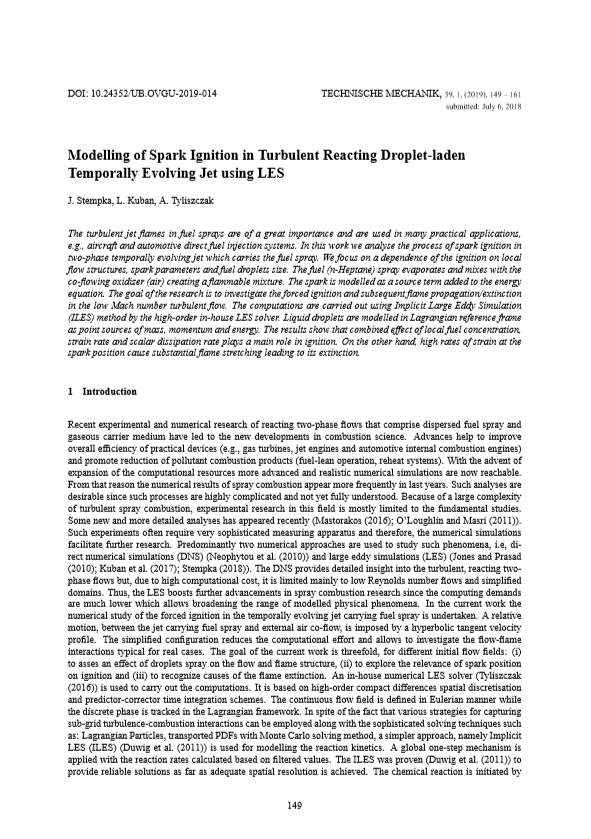Modelling of Spark Ignition in Turbulent Reacting Droplet-laden Temporally Evolving Jet using LES
DOI:
https://doi.org/10.24352/UB.OVGU-2019-014Abstract
The turbulent jet flames in fuel sprays are of a great importance and are used in many practical applications, e.g., aircraft and automotive direct fuel injection systems. In this work we analyse the process of spark ignition in two-phase temporally evolving jet which carries the fuel spray. We focus on a dependence of the ignition on local flow structures, spark parameters and fuel droplets size. The fuel (n-Heptane) spray evaporates and mixes with the co-flowing oxidizer (air) creating a flammable mixture. The spark is modelled as a source term added to the energy equation. The goal of the research is to investigate the forced ignition and subsequent flame propagation/extinction in the low Mach number turbulent flow. The computations are carried out using Implicit Large Eddy Simulation (ILES) method by the high-order in-house LES solver. Liquid droplets are modelled in Lagrangian reference frame as point sources of mass, momentum and energy. The results show that combined effect of local fuel concentration, strain rate and scalar dissipation rate plays a main role in ignition. On the other hand, high rates of strain at the spark position cause substantial flame stretching leading to its extinction.





